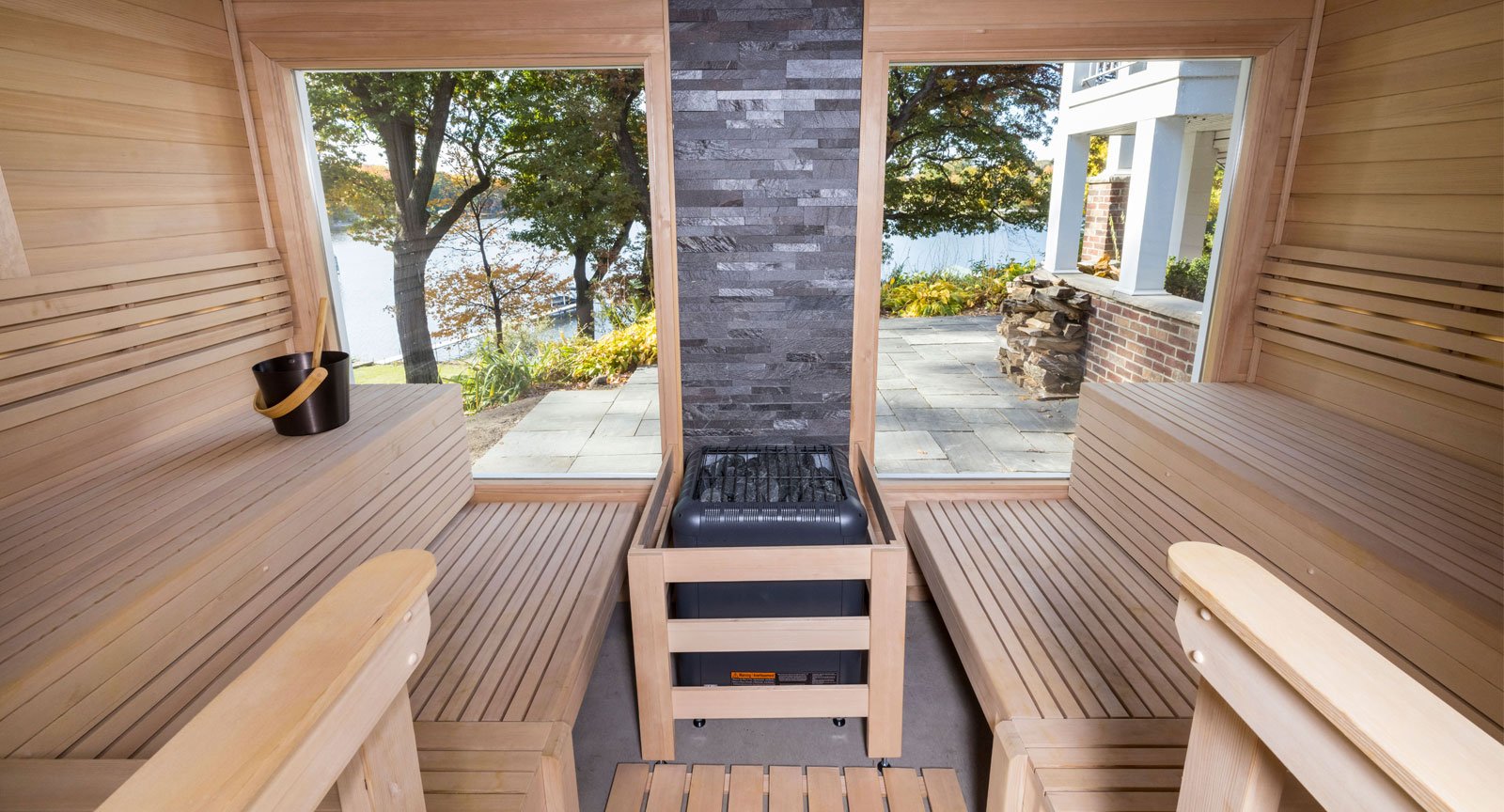A Biased View of Traditional Sauna
A Biased View of Traditional Sauna
Blog Article
Traditional Sauna Fundamentals Explained
Table of ContentsGetting My Traditional Sauna To WorkThe Of Traditional SaunaNot known Facts About Traditional SaunaSome Of Traditional Sauna
Many of the weight shed in a sauna is water loss and is re-gained upon rehydrating. Without a question sauna can be an important component of a healthy weight loss program. To check out the differences in between traditional and IR saunas, I will certainly separate these right into proven, theoretical, and made differences.Therefore, the hottest point in the saunawhich is at the ceiling directly over the sauna heateris generally in between 185 and 190 F. Traditional Sauna. Claims that a traditional sauna exceeds 200 F is simply not real and not suitable for electrical saunas sold in the US. The temperature for a far-infrared sauna is usually set in between 120 and 140 F; nonetheless, unlike the conventional sauna, the objective in and IR space is not to attain a heat
As a result of this, the temperature difference is nearly unnecessary, given that profuse sweating results in both sauna types, yet the technique of heating the body is various. In an IR sauna the bather will feel hot and will certainly sweat profusely, however at a lot reduced temperature levels. Hence, if the goal is to invest longer amount of times in the sauna, the IR sauna is a great option.

Traditional Sauna Fundamentals Explained
When the high temperature level is accomplished, the aspects cycle on and off to maintain the heat. Many traditional sauna individuals enjoy pouring water over the rocks to produce steam to raise sauna humidity levels. The advantages of putting water over the rocks consist of: making the room extra comfortable, moistening the nasal flows, and permitting the use of aromatherapy by blending important oils with the water.
In a far-infrared sauna, the heat waves pass through the body to efficiently heat up the body and elevate the body core temperature level. To achieve this boosted temperature level, Far-infrared emitters develop infrared energy which is close to the exact same wavelength as that which the body normally emitsoften described as the "Important Variety" of 7 to 14 microns), so the power is well received by the body.
When the energy enters the body, it triggers the body temperature level to boost and eventually leads to perspiration. In an infrared sauna it's essential find out here now for the emitters/heaters to remain on almost regularly. Because there is no mass of rocks to maintain warm, the sauna will cool if the emitters turned off.
As mentioned above, the sauna bather in an infrared area wants to position himself before operating emitters to get optimal take advantage of the warmth. The heating time for both areas can be extremely various, depending upon exactly how the areas are utilized. For a conventional sauna, a bather ought to permit 30-40 mins for the area to achieve a preferred temperature level and to correctly pre-heat the rocks.
3 Easy Facts About Traditional Sauna Described
A well constructed sauna will usually accomplish a temperature use this link level of 150-160 F in regarding 30-40 minutes (Traditional Sauna). For hotter temperature levels, the space may need to warm for a longer period. Once the room accomplishes set temperature level, the heater will cycle on and off, commonly operating concerning 50% of the time. The protected wall surfaces and the heated rocks will keep the area warm and at secure temperatures.
To some, 15 minutes was "squandered" while the infrared energy heated up the timber panels rather than warming a body, while others discover a pre-heated room to be a lot more comfortable and think a raised starting temperature is necessary to start perspiring. The length of advised usage for each room is approximately the same (10-15 mins per session); however, due to the reduced air temperature levels and the capacity to feel the results of infrared warmth faster than a typical sauna, it is not uncommon for an individual to invest a total amount of 20-30 mins in an infrared sauna.
Traditional saunas have a tendency to be bigger (therefore make use of more power) than infrared saunas, go to website although standard saunas are definitely readily available in one and 2 person dimensions. For a two-person standard sauna, 5x6 or 5x7 dimension is most prominent. The top bench can conveniently seat two or 3 people and is additionally long sufficient to relax during the sauna session.


The typical cost per kWH of electrical power in the U.S. is approximately $0.11, so a 4.5 kW heater will set you back roughly $.50 to run for one hour, if the heating system runs constantly for one hour. Commonly a sauna heating system will run for 75% of the initial hour and 50% of subsequent hours on because the components cycle once the established temperature level is accomplished.
The 5-Minute Rule for Traditional Sauna
A 2 person far-infrared space is generally literally smaller than a typical sauna, typically concerning 4' x 4' or smaller sized. The IR furnace is commonly 1.5-1.7 kW using a 120 volt 15 amp plug-in service. Since the room can be used earlier than a sauna space, we will certainly assume the space is used for to of an hour including warm up time.
There is a hardly ever gone over difference in the social experience between the two areas. While our culture has actually shed a few of the social advantage of the standard sauna experience, it can be very socially gratifying. From household time in the sauna, to heart-felt discussions with loved ones, to sauna partiesthe conventional sauna experience can bring about intimate socializing.
Many greater end infrared rooms include colored light therapy, noise systems and full-glass fronts.
Report this page